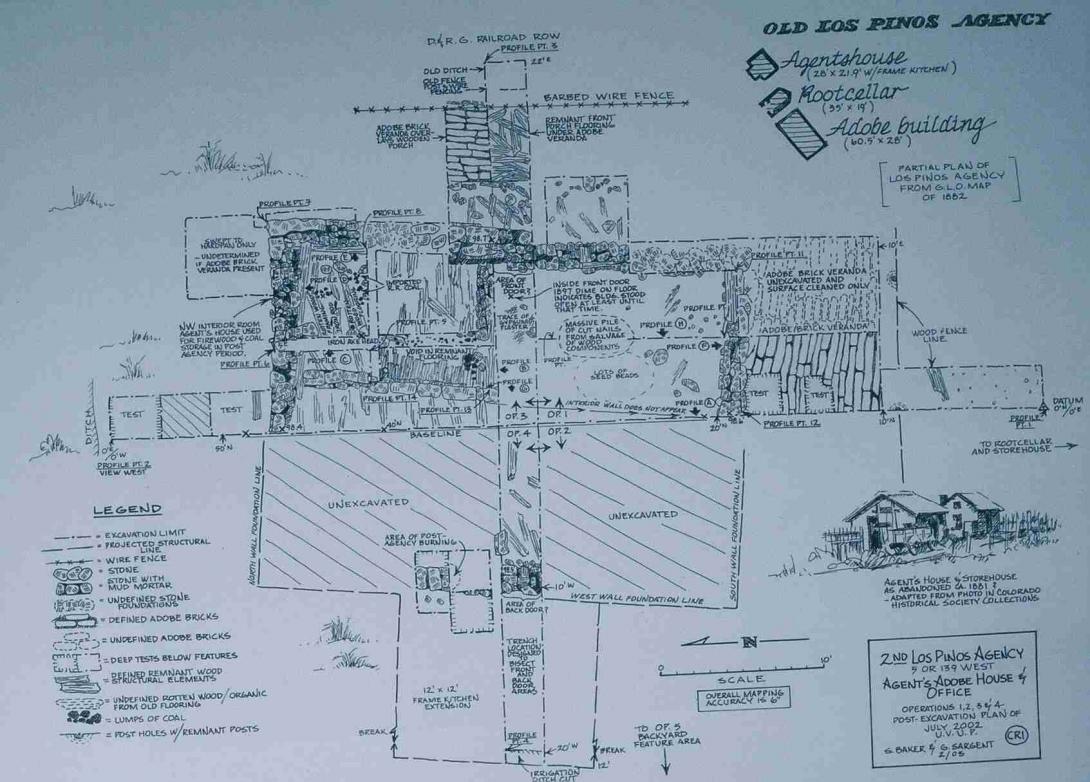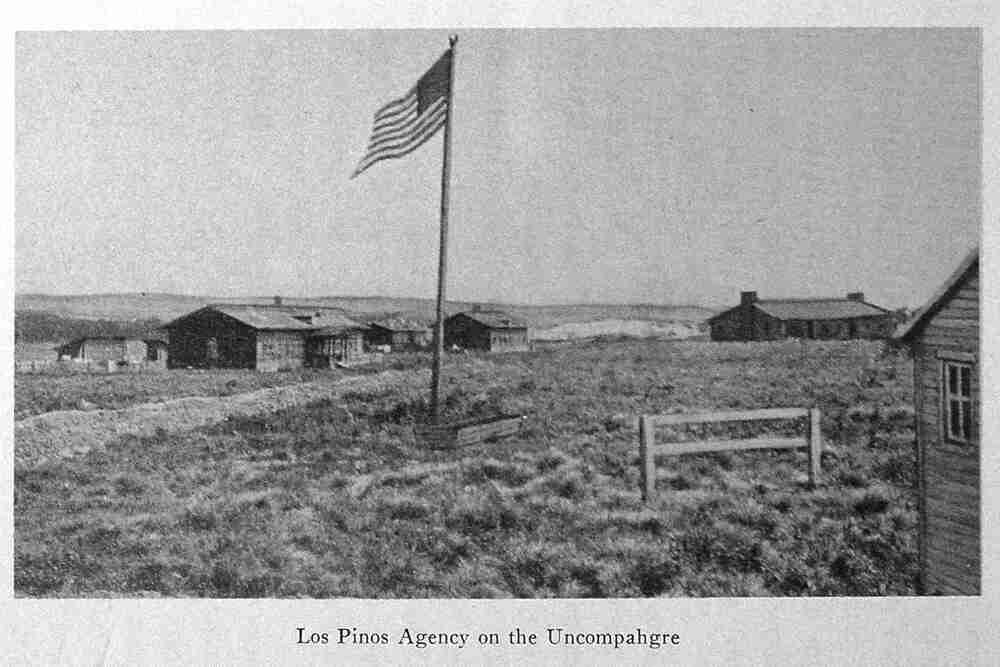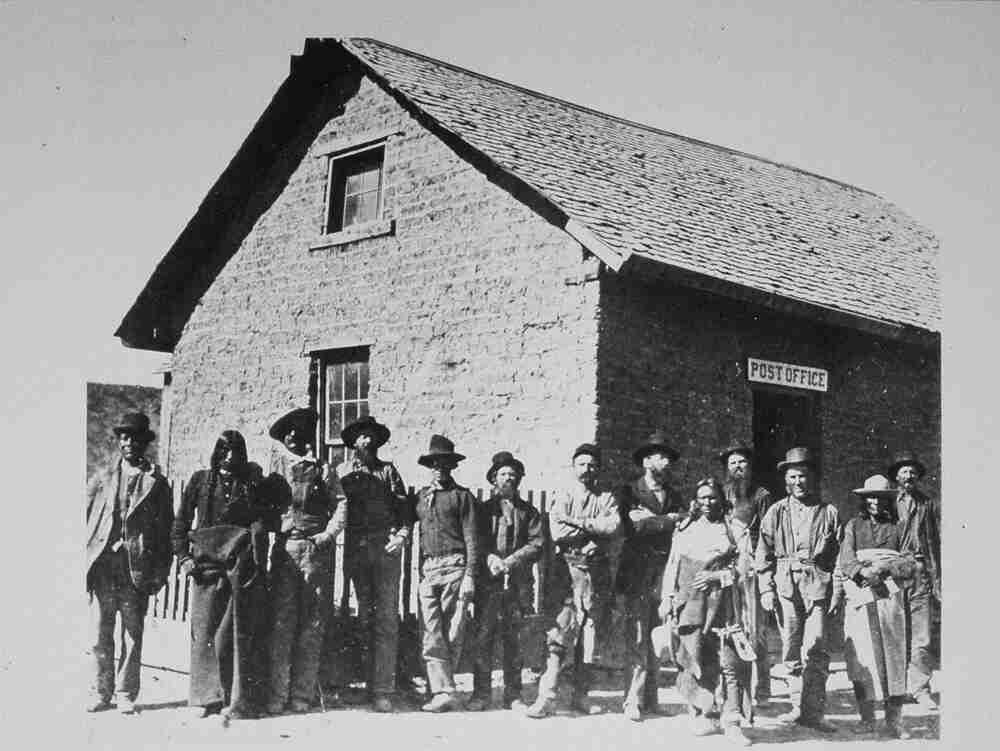Los Piños Indian Agency
Full Article
After the Treaty of 1868, the Los Piños Indian Agency became the center of governmental authority for the Uncompahgre Utes on the Ute Indian Reservation in western Colorado. While largely forgotten after its abandonment in 1881, the site of the second iteration of the agency is now under archaeological study and provides a window into one of the darker periods in the history of Colorado’s Ute people.
Background
The Nuche, or Ute people, occupied the mountainous regions of what would become Colorado at the time of the Colorado Gold Rush. The gold rush, followed by the Homestead Act of 1862 and an 1863 treaty that compelled the Nuche to leave the Front Range to whites, encouraged white colonists to start pushing deeper into the Ute heartland. With the end of the Civil War in 1865, miners and settlers poured into the Colorado Territory, and the government had to address the potential for conflict on Ute lands. The American people were deeply divided on how best to remove Indigenous people from their lands.
Many in the military believed it would be best to destroy Native nations through warfare. Many Colorado politicians, such as former Governor Frederick Pitkin, held such a belief. Others believed that Indigenous people could be led to give up their hunting and gathering and be taught to farm, learn trades, and follow the ways of white people on reservations. After the Civil War, under President Ulysses S. Grant, the latter belief prevailed in the form of the Peace Policy—a set of government policies that was essentially nonviolent but would still strip Indigenous people of their land and culture.
This policy led to the establishment of many Indian reservations and associated Indian agencies under the purview of the Office of Indian Affairs, part of the Department of the Interior. Indian agencies were administrative centers where annuities (food and other provisions) were distributed and Indigenous people received instruction on farming and other white endeavors. The agencies also served to tether Indigenous people to the government, which reduced their political autonomy and allowed for easier takeover of their land.
There was a great deal of fraud and malfeasance involved in the administration of the agency and reservation system, and the Indigenous people were frequently starving when annuities did not arrive in a timely fashion.
First Los Piños Agency
It was in this political context that the Los Piños (the Pines) Ute Indian Agency was established soon after the Civil War. Some Ute leaders, including Chief Ouray, agreed to the Treaty of 1868. This founded a reservation that covered nearly all of Colorado west of the Continental Divide. Under provisions of the 1868 treaty, an agency was to be established by the Office of Indian Affairs on the Los Piños River in extreme southern Colorado to serve some of the Ute bands.
For various reasons the agency could not be constructed on the river. Instead, it was established in the high mountains near Cochetopa Pass south of Gunnison, which was close to the eastern boundary of the new reservation. This poorly constructed facility (eventually known as the first Los Piños Agency) was so high in the mountains that it could not be easily supplied and the surrounding land was unsuitable for growing crops. The facility’s primary purpose was to serve the combined Uncompahgre (earlier known as Sabuagana) and Tabeguache Ute bands. By the late 1860s these two bands had merged, largely because the Uncompahgres had been severely reduced in numbers by disease and warfare. For a number of years this combined band was simply known as the Tabeguaches.
Second Los Piños Agency
By the early 1870s, miners and settlers were encroaching on the eastern boundary of the reservation, and the authorities deemed it prudent to move the Los Piños Agency westward, farther away from the white settlements around Gunnison. In 1875 the agency was moved to the Uncompahgre Valley, roughly 100 miles from the old agency. This was the very heart of the Ute reservation, some of their prime hunting grounds, and the homeland of what was by then one of the last free Native nations in the United States. The Utes had an immense reservation in Colorado that was coveted by white miners and settlers. If the agency could be established in this area, it would be a simple matter to bring the Tabeguaches into fully dependent status and ultimately remove them from Colorado.
By 1876 what became known as the second Los Piños Agency was in operation, and now that it was located on the Uncompahgre River, it also became known as the Uncompahgre Agency. Facilities were constructed of cheap adobe, stone, and wood-frame buildings. Located at the modern community of Colona, some nine miles south of present-day Montrose, it primarily served the combined Uncompahgre and Tabeguache bands.
The agency’s history is filled with despair for the Uncompahgres and Tabeguaches. The San Juan Mountains to the south had been ceded away by the Utes in the Brunot Agreement of 1873, and trespassers began pushing hard against the southern boundary of the reservation from there as well as from Gunnison on the east. Fraud and deceit characterized much of the Indian agents’ administration, though there were some bright, thoughtful moments under the administration of others.
Two events at the end of the 1870s led to the removal of most of the Nuche from their Colorado homeland. In 1879 Nathan Meeker's harsh enforcement of the Peace Policy at the White River Agency provoked a Ute uprising in which Meeker and his entire staff were killed. Of course, the Meeker Incident brought the fury of the US military and, in Colorado especially, calls for the Utes to be wiped out or forcefully removed. In early 1880, Ouray and other Nuche leaders were brought to Washington, D.C. to testify about the Meeker Incident and sign a new treaty that would send their people to Utah.
In the fall of 1881, the US Army rounded up all remaining members of these old bands that it could find and force-marched them to a new reservation in Utah. Ouray, who died in the summer of 1880, did not live to see his people force-marched off their ancestral lands. The second Los Piños Agency was abruptly abandoned, and all government property at the short-lived facility was sold. The old agency soon passed into history and was largely forgotten.
Today
In recent years the Uncompahgre Valley Ute Project has relocated the old agency and conducted extensive archaeological studies at the site. Today, US Highway 550 South passes directly through the center of the old agency on the north boundary of the community of Colona in Ouray County. There are, however, no commemorative monuments marking the location of the old agency, and many Utes today see it only as a reminder of a dark and unhappy chapter in their history.



















